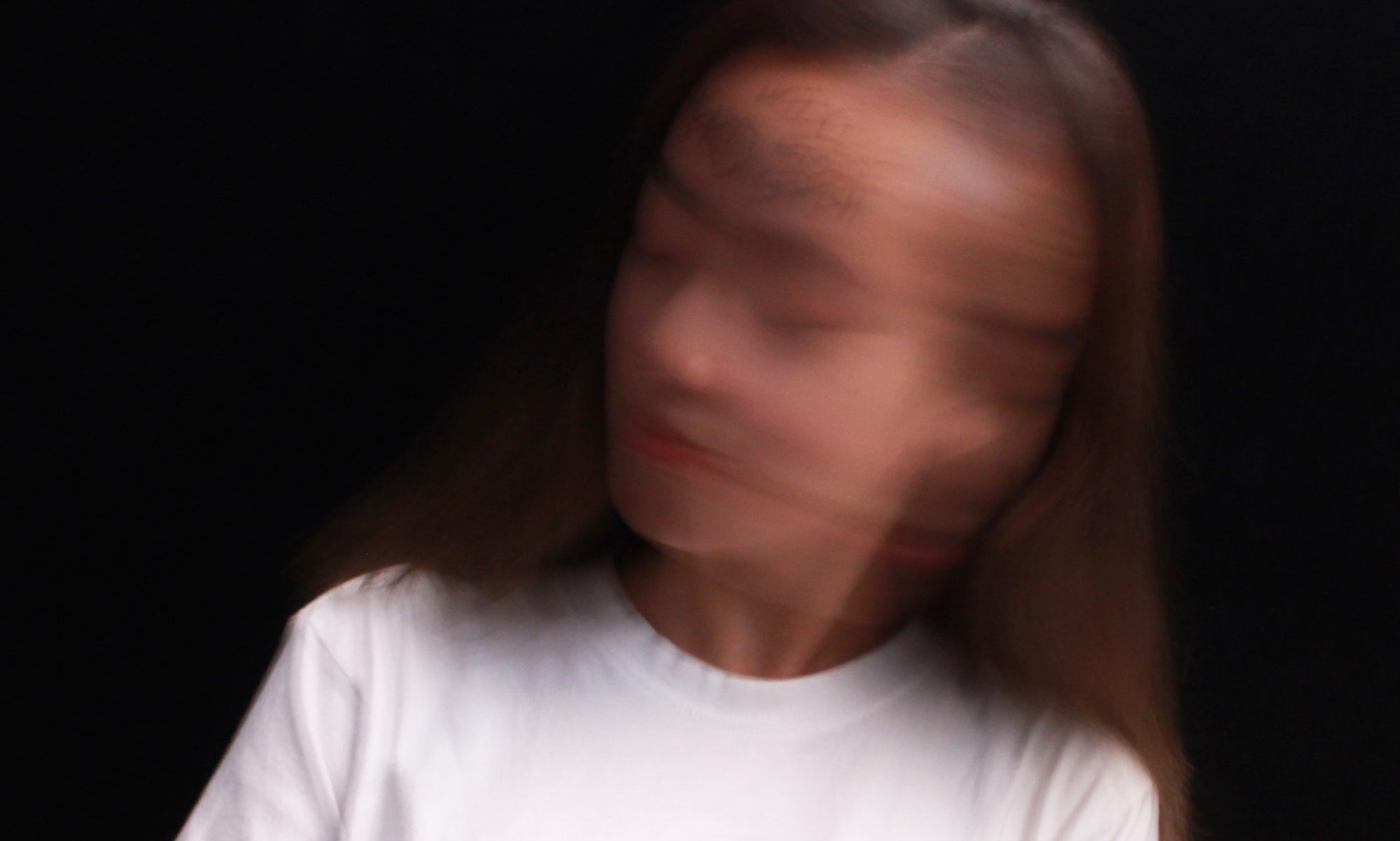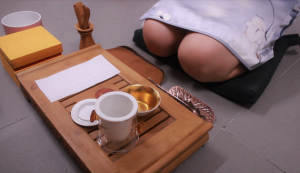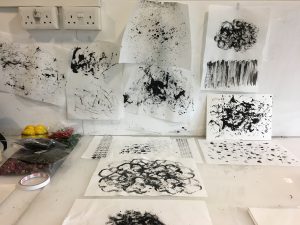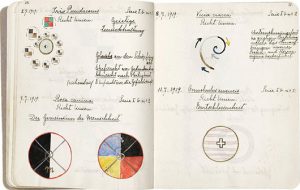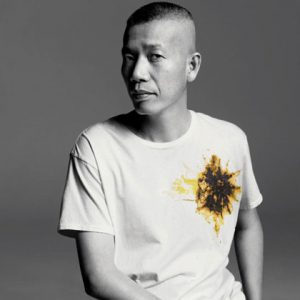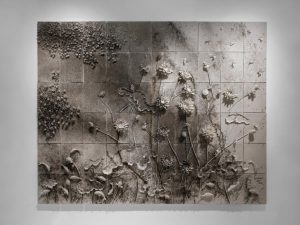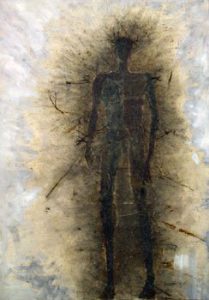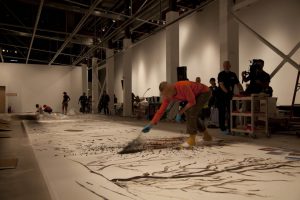MY EMO LINES
Guilt – Overspend
Enjoyment – Chinese Tea Culture
Satisfaction – Chilli
Annoyance – Dream
Fear – My Constraint
Torment – I Hate Laundry
GUILT – OVERSPEND

According to the dictionary, overspend means spend more than the expected amount. Overspending is one of the issues that I am trying to solve. Receipts are the evidence. I feel extremely guilty when I look at the whole stack of receipts in my wallet. Thus, I amplified my guilt by making it as one of the mark making to remind myself and others not to have unnecessary expenses.
Material: Receipts, Clear Tape & Water
This is an interesting technique that I knew years ago. This is the first time I am using it in the school project. Simply paste the clear tape on the side of the receipt that has words. Tap water on the receipt then removes the wet paper. The words will be transferred to the clear tape, and overlapped tape achieved the ideal effect.
I had done experiments with the original receipts. The value of the words transferred on the clear tape is low, which could not achieve the ideal effect. Hence, I scanned and printed the receipts, and repeated the same method.
High density is achieved by adding more elements in the space. The high value of the words forms a contrast with the white background, which emphasize the emotion.
ENJOYMENT – CHINESE TEA CULTURE

I was inspired by a Chinese artist Cai Guo-Qiang, who is deeply influenced by his cultural background. I started to pay attention to my cultural background after knowing more about Cai. I was born in China and spent my childhood there before I moved to Singapore. Chinese tea always plays an important part in my family, for example, family gathering. Everyone sits together, having the warm tea and share the joy.
Material: Chinese tea & Watercolour Paper
I started the experiment with different type of Chinese tea. I used the tea and tea leaves to draw in different motion on different kinds of paper, and watercolour showed the best result. As the paper would not warp too much when it meets water.
I cropped the part that had the cleanest lines. In the final artwork, repetition is used to create rhythm, a sense of uniform movement, which is like the process of making Chinese tea. In addition, when elements symmetrical, the design feels harmonious formal. The low-value colour of the artwork is the original Chinese black tea. It is visually subtle that create a calm feeling. The design principles used here represent the function of tea, that ties family members together, and shows the sign of respect.
SATISFACTION – CHILLI

Chilli is my all time favourite food. It goes well with all kind of ingredients. I always feel satisfied when eating or cooking spicy food.
Material: Chilli, Chinese ink & Watercolour Paper
I had tried several methods to do mark making with chilli. I prepared a aluminium tray and ‘fried’ chilli in different shapes, as the process of frying chilli is satisfying. Moreover, I tried to dip different shapes of chilli in the ink and stamp them on different types of paper.
In the final artwork, repetition is used to create a feeling of organized movement. The gradual change of value leads the viewer’s eyes to move back and forth. The consistent movements bring a feeling of intense excitement and happiness.
ANNOYANCE – DREAM

Dream reminds mysterious since the start of human history. It is a succession of emotions, images, ideas, and sensations. I always mix what happened in my dream up with the reality. It is annoying that I try to remember my dream but the memories fade so fast.
Material: Black Cloth (t-shirt), Poster Colour & Cutting Mat
At first, I was trying to use my face to do mark making, and I found out this illusionary effect I got because of different amount of pressure. It reminded me of the feeling of dreaming. Therefore, I decided to use the similar method for the final artwork.
This mark making was done while sleeping. I applied white poster colour on the cutting mat, covered with a black t-shirt and plastic bag. Then placed it on my pillow. The shapes and the value of colour were determined by the movement of my head on the pillow.
The marks on the black clothes were irregular. those shapes represent nothing other than what we see like we are always confused by the meaning of the dream. The cropped part is where my head mainly moved around, like the track of my dream. Further, the composition is not symmetrical, which creates feels of informality.
FEAR – MY CONSTRAINT

In the past few years, I always restrict myself with rules that set by the other’s opinions and forgot to listen to my heart. My deepest fear is losing freedom physically and mentally. I am eager to see the world with my own vision and follow the direction of my true feeling.
Material: String, Brush Pen & Watercolour Paper
The artwork was done unconsciously, that I blindfolded myself, tied my hands together, and hung the brush pen with the string. My vision was taken away as well as my freedom. I had down a few times and the cropped part has a dot. It was caused by accident, which represents the uncertainty of life.
The expressive curvy and ununiform lines tend to lead the viewer’s’ eyes wandering around the space to nowhere, which creates a sense of chaos like my fear towards the constraint.
TORMENT – I HATE LAUNDRY

I lived by myself since 15 years old, thus I have to do my own laundry. It is the housework that I hate the most. By right, I should do laundry at least once a week. However, I often postpone it until I have almost no clothes to wear.
Material: Clothes, Black Chinese Ink & Newsprint
I threw and rub the clothes with black Chinese ink on the newsprint.
I had done several prints. The chosen area content dark patch, sharp shapes, curvy and straight lines. The composition is not symmetrical, also not in any regular order. The mix of different elements forms no unity, which is chaotic.
ALL IN ALL

I enjoyed having this project as I experimented with different mediums to express emotions, not just the conventional ways with paper and pen. Also, I was inspired by great artists through research and the in class group exercise. Abstract art was a challenge for me, as I am more familiar with realistic drawing. Through this project, I have a better understanding of using design elements and principles to express thoughts.
RESEARCH ON ARTISTS
Cai Guo-Qiang https://oss.adm.ntu.edu.sg/daiy0010/research-on-artist/
Hilma af Klint https://oss.adm.ntu.edu.sg/daiy0010/research-on-artist-2/
REFERENCES
Kavanau, J.L. (2000). “Sleep, memory maintenance, and mental disorders”. Journal of Neuropsychiatry and Clinical Neurosciences. 12 (2)
http://nwrain.net/~tersiisky/design/value.html
